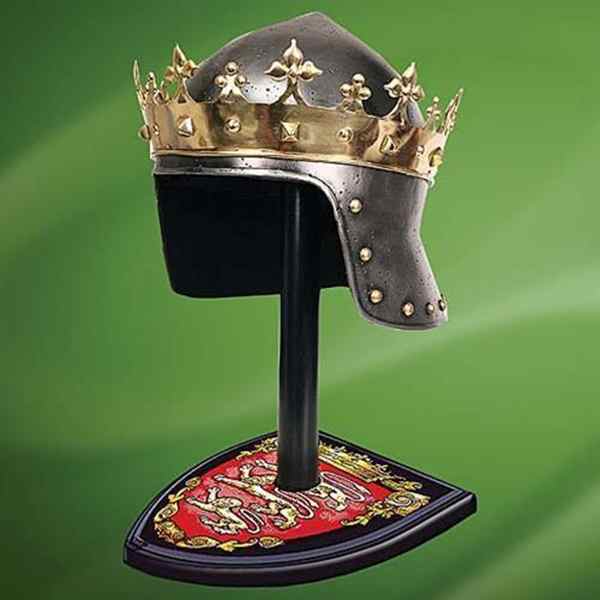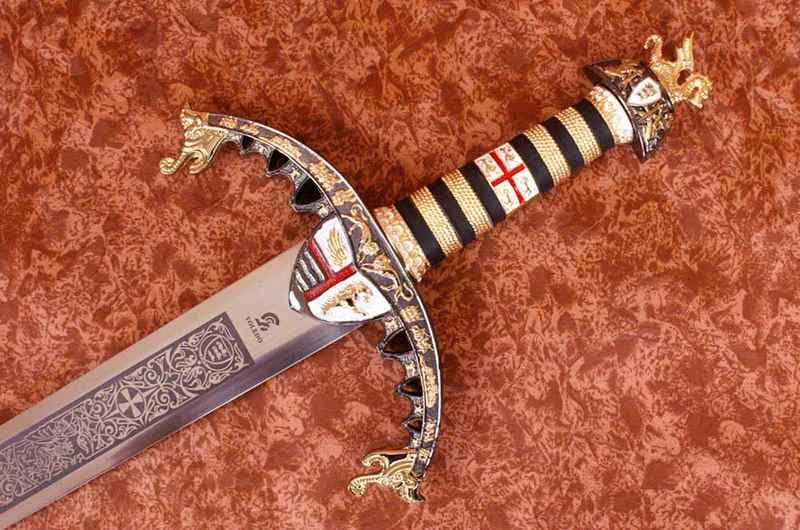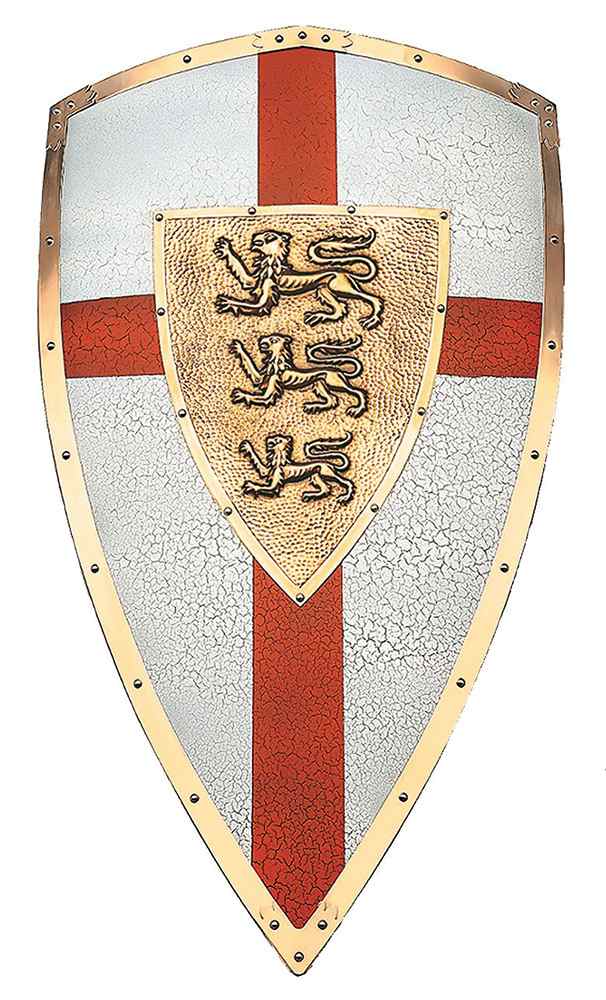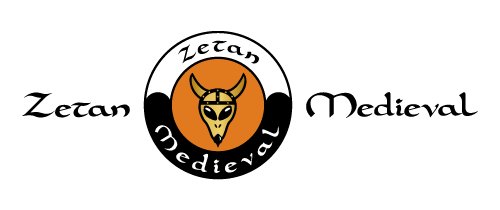HISTORY OF RICHARD THE LION HEART
This English king was born on September 8, 1157. Richard I of the Plantagenet , known as the Lionheart, ruled England during the 12th century. It was characterized by the numerous wars in which it took part. Being the third son of King Henry II, he barely had a chance of ascending the throne, so in his early years he dedicated himself to protecting the lands that his mother left him in France, against the robbery of the French nobles.
Many consider him the paradigm of the medieval king, fierce with the sword, defender of Christianity and harsh with his nobles. His fame, deserved or not, is unquestionable, as is his obsession with the Crusades and for subduing the rebellious nobles of his lands in France, an obsession that forced him to abandon his duties as king. Suffice it to say that during the 10 years that his reign lasted, he was only in England for six months.
There is no doubt that he is a mythologized figure, the ideal knight who loves war and the sword . His fame was increased by his relationship with Robin Hood. Fame that has reached our days where he is seen as the complete Christian king. Although in truth in reign there are as many lights as shadows.
Third male son of the great King Henry II of Plantagenet and Eleanor of Aquitaine, he was able to reign due to the death of his two older brothers, William and Henry. Ricardo was a magnificent minstrel and poet, but he always showed his passion for weapons. He lived for a long time in France to such an extent that French was his cradle language.
Despite there being no supporting document, Richard I believed himself to be a descendant of King Arthur Pendragon .
Regarding his appearance, it seems that he was an attractive and very tall man, as he reached around 2 meters in height. The nickname of the Lionheart comes from his valor and courage in battle.
In 1170, Henry II and Henry, the young man who were father and son, reigned jointly in England. In 1173, Ricardo, his mother and his brothers, declared war on Enrique II, to dethrone him for the benefit of Enrique the Younger. But Enrique II was winning one after another of his opponents. Ricardo resisted and in 1174 with the aim of dethroning him and leaving Henry the Younger as sole king. His father deployed all his troops and defeated them one by one, until Ricardo was the last to resist. In 1174 he refused to fight against his father, to whom he demanded forgiveness, swearing allegiance to him. In 1188, father and son face each other again when the father intends to divide the inheritance between Ricardo and his brother Juan. This time victory smiles at Ricardo.
In France, the rebellion of the French nobles against Ricardo did not stop, in the lands inherited from his mother. Once again Ricardo took up the sword and with his troops took the fortress of Taillebourg , thus defeating the rebels who had taken refuge in it. However, throughout his reign there were constant uprisings by these nobles, despite the extreme brutality he applied to those who surrendered.
A curious fact is that he had 2 coronations as king, the first in 1189, when his father died, and the second when, upon returning from the crusades, it was found that his brother Juan sin Tierra had usurped his throne .
Ricardo I, participated in the Third Crusade, together with Felipe II of France and Federico I Barbarossa , German emperor. During all this time, all his physical and mental activity was focused on the crusade, leaving aside all the other obligations that he had to attend to as King of England . With Federico I dead, Felipe II retired, Richard reached an agreement with Sultan Saladin, which consisted of the cession of Acre, and permission for all Christians to pass to Jerusalem without being attacked.
Richard Lionheart lived in a hectic context of medieval Europe. The two great powers of that time were France and Germany. There were few situations of peace with them (one of them was the third crusade). Because of the lands that belonged to him by inheritance in the north of France, Felipe II was the monarch with whom he had the most confrontations.
Returning to England after the Third Crusade, disguised as a Templar, he was recognized despite his attire by Leopold V of Austria, who took him to Henry IV of Germany, who imprisoned him in Düstein Castle . He asked for 100,000 marks for his freedom, a huge amount of money that only his mother Leonor managed to raise. Once the ransom was paid, he was released on February 4, 1194.
Upon reaching his land, he found, much to his regret, that his brother Juan was usurping his throne. In the presence of Ricardo, he asked for forgiveness. Ricardo accepted it and named him his heir. In this way Corazón de León was crowned king again in 1199. The nickname of his brother Juan sin tierra was because it was believed that he would never manage to reign. And the legends of Robin Hood do nothing to extol his figure; quite the opposite, drawing him as a bad king, incapable, petty and unfair.
In one of the many battles that Ricardo fought against Felipe II of France , Ricardo dispossessed of armor was looking at the castle of Chalus – Chabrol. Suddenly he felt a sting in his left shoulder. It was a crossbow bolt. This was not well extracted and also the consequent wound was not well healed either. This caused gangrene that ended the life of Richard I of England, Heart of the Lion. The body was entombed in Fontevrault Abbey , next to his father, but his heart traveled to its last resting place in Rouen , Normandy. His universal heir was his brother Juan, since Ricardo had no offspring.
WHERE IS RICHARD THE LION HEART’S TOMB?
Richard I is buried, at his father’s feet, in Fontevrault Abbey , in France, near Anjou.
WHO DEFEATED SALADIN?
Ricardo Corazón de Léon , participant in the best known of the crusades, the Third, together with Felipe II of France and Federico I, Barbarossa , liberated Jerusalem, defeating Saladin’s warriors for the first time, which up to that moment were considered practically irreducible. Years later (1244) the Muslims took revenge by conquering Jerusalem again, by the Khorezmite Turks .

THE SWORD OF RICHARD THE LION HEART
It is not known exactly where the sword is and where the sword of perhaps the most famous knight of Medieval Europe, Richard I of England, Heart of the Lion, is located, but without a doubt, being the sword of a king, who also He distinguished himself as the most combative of his time, as well as the most courageous and reckless, it would be identified by beautiful details, in all the parts that make up a sword. The numerous replicas of it that exist differ greatly in their ornamentation. Surely it was forged by hand, this weapon came to constitute a kind of relic for whoever carried it.
The luxury sword, fit for a king, should have a long, broad blade, the most common component of which was tempered steel. The hilt and garrison increased the value of the sword by adding to these, other precious elements such as gold, silver, precious stones, etc. Even the pods were not coarse, but distinguished by their beauty.
At this time it was customary for the warrior to carry two swords, one long and grooved, for hacks, and another shorter one, for saber blows and hacks. However, we very much doubt that the character in question carried two swords, since in the multiple representations that exist of him, he appears with only one sword.
WHAT WAS THE SWORD OF RICHARD THE LION HEART CALLED?
Nothing is known about the name of Richard I’s sword, but he, who considered himself a descendant of King Arthur Pendragon , argued to his closest officers that the sword he carried was the mythical Excalibur. Fact that creates a multitude of doubts, if not the total absence of truth.

WHAT WEAPONS AND ARMOR DID RICARDO USE IN THE BATTLES?
Richard I of England was an English king, who reigned in that country during the 12th century ( July 6, 1189-April 6, 1199) , who was noted for his great attachment to battle, fighting almost his entire reign in numerous wars. , to the point of neglecting the affairs of his kingdom for a long time. In battles, as a good medieval knight, there were several different pieces that he used for battle, such as the shield, helmet, dagger or spear.


